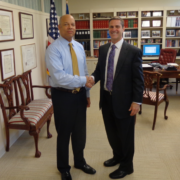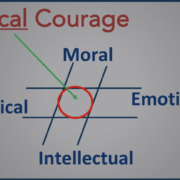5 Reasons Why Your Development Strategy is Failing
5 Reasons Why Your Development Strategy is Failing

THE RIGHT FOUNDATION
“Kim” was searching for the right development strategy. As the new executive director, she wanted to boost the nonprofit’s revenues and invest marketing resources for the biggest payoff. Some told her to invest in Direct Mail, others to focus on major donors and foundations. Yet other experts suggested a video-centric social media effort aimed at individual donors.
As I began asking Kim some questions about the nonprofit, the reasons for the fundraising problems came clear: she took over a nonprofit that had not gotten the right foundations in place. Until that occurred, no amount of fundraising tactics would work.
A SOLID FOUNDATION FOR GROWTH
Here are the five elements to a solid foundation for growth:
- Board governance. Does your board govern effectively? Does everyone on your board donate? Major donors and foundations, especially, will avoid supporting nonprofits that have ineffective boards or directors not willing to put their own money into the organization.
- Transparency and Accountability. Watchdog ratings are a quick check to assess whether the nonprofit is using resources wisely. Would you prefer to donate to an organization that has high marks or low marks? Poor ratings are donation killers.
- Strategy. Donors want to know the nonprofit has thought through the challenges and has an approach to the mission that stands a reasonable chance of success. Donors expect you to be able to explain your strategy in clear, simple, and believable terms.
- Impact. Are your efforts doing any good? Too many nonprofits measure efforts rather than outcomes. Serious donors want to know that their support will make a difference. A combination of personal examples and quantitative measures is the gold standard.
- Personal Connection. Donors with a deep, personal connection to the cause are likely to support your nonprofit sustainably. How are you creating such bonds?
Without a solid foundation in place, fundraising tactics are the noise before failure.
GET THE FUNDAMENTALS RIGHT
Kim is now focused on getting the fundamentals right so the development effort has a chance to succeed. Her efforts look like a list of best practices for new nonprofits. She is:
- Working with the board chair to establish key governance committees and board director expectations.
- Providing charity watchdogs, such as Guidestar, Charity Navigator, and Give.org the needed documents so they can begin rating her nonprofit. She has also learned from them their standards so she can make sure the right transparency and accountability measures are in place.
- Developing a sound strategy and implementation plan that she can explain in clear, simple terms.
- Establishing a compelling set of outcome measures so they can begin collecting and assessing the right data, while also gathering powerful personal stories from beneficiaries of their work.
- Developing creative ways to create personal connections to the mission for her ideal donors.
BRAVO, KIM!
So many nonprofits are understaffed and overloaded with work. This can create a situation, as it had for Kim’s nonprofit, in which the executive director is overwhelmed trying to keep up while the volunteer board is not fully aware of the costs. This is often a recipe for slow failure. Dedicating time and effort to the 5 important-but-not-urgent issues at the top of this article can help your nonprofit create a solid foundation (and will probably reduce the volume of daily crises, too!).






















